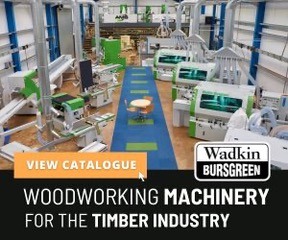As the UK’s only production manufacturer of teak decks with full depth seams for boats and yachts, Moody Decking and Services, produces several thousand square metres of predominantly CNC-programmed decking a year, using Alphacam software. The first time Alphacam was used in conjunction with its state-of-the-art digital scanner, it was a real sink or swim affair.
Boats priced from £5000 up to £120m use Hampshire-based Moody Decking’s teak decks, as its unique construction process ensures the decks last considerably longer than decks produced with traditional rebated seams.
Martin and Scott Moody are the fifth generation of their family to work in the boating industry. The current company has been making decks for 10 years, supplying to 12 high-end boatyards, with custom one-offs for individual owners. Previous family enterprises stretch back 200 years and have included building dinghies and wartime landing craft, yacht construction, repair/maintenance, yacht brokerage and running marinas.
Martin Moody explains the difference between conventional decking and decks manufactured using his company’s own process: “To keep the planks evenly spaced, a traditionally-built deck will have a 4mm wide seam, rebated to 3-4mm for a 6mm deck, leaving 3mm of teak at the bottom used to control the seam width.
“Caulking is only added to the sides of a seam, not the base, so it can expand and contract in the sun. As the decking wears down over the years, the rebates end up with only 1mm of caulking attachment, so when people walk over it, the seams are pulled out.
“This doesn’t happen as quickly with Moody decks, because our special manufacturing procedure creates full depth seams, adding substantial life to the deck, potentially doubling the life of the product. The Moody Decking caulked seam has no rebate; the caulking is the full depth of the seam in every case, regardless of the thickness of the deck.
“Our teak thickness varies between 6mm and 18mm, depending on the size of the boat. As an example, our 6mm decks have a full 6mm of caulking, while a conventional rebated deck only has 3-4mm.”
In his opinion, the combination of his company’s digitising system and Alphacam CAD/CAM software slashes average production from around 12 weeks to less than a fortnight, including drying time: “It’s been a real game changer for us, giving us the opportunity to increase our workload because our turnaround is now so much quicker and efficient, as well as reducing the required floor space.”
Moody’s scanner digitises up to 100 metres with extreme accuracy. It then smooths the shape out to tolerance with Rhino before exporting it into Alphacam to undertake the design and styling process incorporating butt patterns, snapes, etc, thus creating the deck to each customer’s remit.
Digitising and CAD technician, Jarrod Hulett, says moving from CAD to CAM in Alphacam is seamless and quick. “An Alphacam program contains is around 10 planks wide for a 12-foot boat, rising to more than 150 for a 100-foot vessel. Once we’ve located the planks and inserted them into the jigs, the process is extremely straightforward as we only cut the planks in 2D with machining styles.”
Different customers and projects require different material thicknesses between 6mm and 18mm. This requires varying toolpaths and number of cutting passes within the program. As the Alphacam post processor which controls Moody’s two SCM Pratix routers and their Rye machine includes material thicknesses, he can then simply click on the NC output to send everything the CNC machine tools need to start cutting the teak to the correct specifications.
Martin Moody explains that using the scanner in conjunction with Alphacam for the first time several years ago was a real sink or swim situation. “It was the biggest job we’d undertaken at that time ... decking for a 100-foot yacht.
“We knew we couldn’t achieve the quick turnaround time required by the customer without using this system; we had developed the processes required in our minds for some time, and had the technical support contacts in place. This was the right time to proceed. Everything was then installed and we just had to trust the system – which worked perfectly for us.
“It links the digitising, drawing and design packages together, and means we’ve moved on from hand tooling and then digitising individual small component parts, to the whole operation being done in one seamless design and production process, increasing speed of service, accuracy and guaranteed repetition.”
The process has subsequently been sped up even further with a number of Alphacam macros. Three of these involve extrapolating the planking from their angled positions and fully preparing it for insertion into the jig, which he says has turned a two-week job on a large boat into just a week. A fourth macro enables a multiple offset to be done from the same line.
“Another great benefit is that we don’t need to keep thousands of templates. When a customer wants a replacement deck in 20 years’ time, we’ve got the required toolpaths on an Alphacam program and can go straight to cutting it.
“Of course, accidents happen on boats. Planks can be damaged by items being dropped or occasionally through collisions. If we’re sent a picture showing where the damaged planks are in the deck, we simply cut the individual new parts, be that in plank or panel form, for the owner or crew to install.
“Alphacam has revolutionised our production process and we continue to work with the Alphacam engineers to improve and refine our processes into the future,” concludes Martin Moody.








